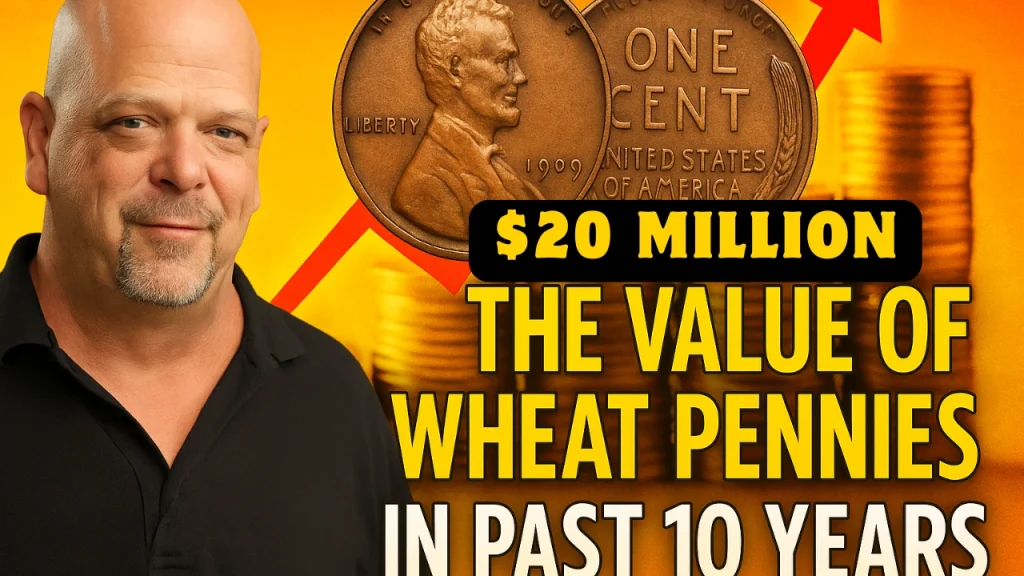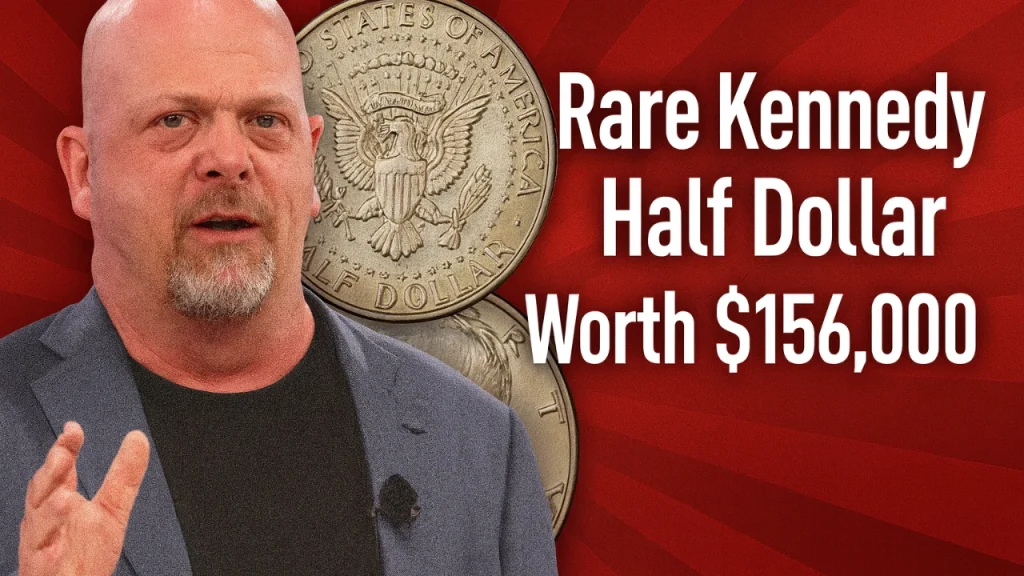A coin worth just one cent could turn into a life-changing fortune for everyday Americans. Hidden in drawers, coin jars, old wallets, and even loose change at the bottom of supermarket self-checkout trays, certain rare penny coins have skyrocketed in value—some reaching an astonishing $840,000 at auction. As collectors intensify their search and auction houses report unprecedented demand, experts are urging the public to check their pockets, because you may unknowingly be carrying one of the rarest coins the United States has ever minted.
This report explains why a humble penny has reached such an extraordinary valuation, what specific features make it extremely valuable, the history behind these coins, how to identify them at home, real auction records, and why the coin market is exploding in 2025. A comprehensive table of key varieties is included to help readers compare potential values quickly.
The story behind America’s most valuable penny
The U.S. one-cent coin has existed since 1793, evolving through different designs, metals, and minting standards. But a handful of accidental minting errors, wartime metal shortages, and limited production runs have created a tiny population of ultra-rare penny varieties.
The penny currently drawing the most attention—and commanding the most jaw-dropping price tags—is an elusive variety from the Lincoln Wheat Cent era (1909–1958). This period produced the most iconic and historically significant penny designs, many of which remain in circulation today.
Among these, one stands above all:
The 1943 Copper Lincoln Wheat Penny.
It has repeatedly broken records at elite coin auctions and is widely considered the most valuable one-cent coin ever discovered in circulation. One specific specimen, in near-perfect condition, is projected to fetch up to $840,000 at a major 2025 collector auction.
Why some pennies from 1943 are worth a fortune
During World War II, the U.S. Mint faced extreme copper shortages. Copper was needed for ammunition, wiring, and military machinery. As a result, 1943 pennies were supposed to be made from zinc-coated steel, not copper.
However, a small number of leftover copper planchets from 1942 accidentally went through the presses. These error coins—believed to number fewer than 20—are the reason an ordinary-looking brown penny can be worth hundreds of thousands of dollars.
These pennies should not exist, yet a handful slipped through undetected. Every verified example has made national news, inspired new treasure hunts, and cemented its place as a legendary coin.
How to identify a 1943 copper penny at home
You don’t need specialized equipment to perform an initial check. Here are key methods collectors use:
Magnet Test
-
Steel pennies stick to magnets.
-
Copper pennies do not.
If your 1943 penny does not stick to a magnet, it may be valuable.
Weight Test
-
Steel cents weigh 2.7 grams.
-
Copper cents weigh 3.11 grams.
A basic kitchen scale can be enough for a preliminary check.
Color Inspection
-
Steel pennies have a silvery, grayish tone.
-
Copper pennies are reddish-brown.
Date Verification
The ultra-rare coin will have:
-
The year 1943
-
No mintmark flaws or alterations
-
No sign of copper coating over steel
Beware of fakes
Counterfeit 1943 pennies often involve:
-
Copper plating on steel pennies
-
Altering the “8” on a 1948 penny to look like a “3”
Professional grading is essential for confirmation.
Why the value jumped to $840,000 in 2025
Coin market analysts report several reasons for the record-setting valuations:
Rising interest in alternative assets
Collectors and investors are turning to rare coins as a hedge against inflation and market volatility.
Increase in private collectors
High-net-worth individuals and celebrities have recently entered the coin market, driving up auction competition.
Limited supply
Only a handful of genuine 1943 copper pennies remain unaccounted for. Supply cannot increase.
Viral media impact
News stories and social media posts about record-breaking sales have boosted demand and visibility.
Condition rarity
Coins graded at MS-65 or higher (mint state) can easily add hundreds of thousands to the price.
Auction houses predict the market for rare pennies may continue to climb through 2026.
Not just the 1943 copper penny: other pennies worth thousands
While the 1943 copper penny is the superstar, other rare varieties can also fetch major money. Many of these coins still appear in pocket change, estate sales, coin jars, and old piggy banks.
Below is a detailed comparison table.
Comparison table of rare penny varieties and their current estimated market values
| Penny Variety | Year | Metal/Feature | Estimated Value (Low) | Estimated Value (High) | Notes |
|---|---|---|---|---|---|
| 1943 Copper Wheat Penny | 1943 | Mistaken copper planchet | $250,000 | $840,000+ | Rarest and most valuable penny known |
| 1909-S VDB Wheat Penny | 1909 | Low-mintage San Francisco issue | $700 | $60,000 | First Lincoln cent; extremely collectible |
| 1955 Double Die Obverse | 1955 | Major doubling error | $1,500 | $50,000 | Highly visible doubling on date and lettering |
| 1922 No D Penny | 1922 | Mintmark missing due to die polishing | $500 | $30,000 | Only U.S. coin where the mintmark disappeared unintentionally |
| 1944 Steel Penny | 1944 | Incorrect leftover steel planchets | $30,000 | $200,000 | Reverse error of the 1943 mistake |
| 1969-S Double Die Penny | 1969 | Rare and dramatic doubling | $20,000 | $110,000 | Counterfeits common; pro grading needed |
| 1972 Double Die Penny | 1972 | Bold doubling on motto and date | $300 | $3,500 | Can still show up in circulation |
| 1992 Close AM Penny | 1992 | Close spacing between “A” and “M” | $2,000 | $20,000 | Hard to spot without magnification |
| 1995 Double Die Penny | 1995 | Doubling on “LIBERTY” | $50 | $1,000 | Among the easiest valuable pennies to find |
How common Americans found valuable pennies by accident
Every few years, a viral story emerges about someone who became unexpectedly wealthy after discovering a rare penny. These stories include:
A teenager who found a $1.7 million penny
A student sorting through his father’s coin collection stumbled upon a 1943 copper penny that sold for nearly $2 million.
A supermarket worker who discovered one in a self-checkout tray
Employees often pick up coins left behind by customers—one of these turned out to be a rare wheat cent worth tens of thousands.
A senior citizen who inherited a penny collection
A routine estate cleanup revealed a 1909-S VDB in pristine condition, eventually selling for more than a car.
These examples fuel the public’s hope and curiosity—and they are part of the reason the market has stayed hot.
Where rare pennies are most likely to be found
Old piggy banks and childhood coin jars
Decades-old cents often remain untouched in family storage.
Antique stores and flea markets
Vendors sometimes mix rare pennies into bulk coin lots unknowingly.
Inherited coin collections
Unlabeled cardboard rolls or albums may hide rare varieties.
Bank-wrapped penny rolls
Collectors frequently search rolls from banks, hoping for a rare find.
Coin-operated machines
Arcade machines, laundromats, vending machines, and parking meters often recycle older coins.
Random pocket change
Even today, wheat pennies occasionally turn up in circulation—some of which might be rare dates.
How to safely store a rare penny if you find one
If you discover a penny that appears rare or unusual, proper storage is critical. Damage, cleaning, or improper handling can drastically lower its value.
Steps to protect your coin:
-
Hold it by the edges, never the face.
-
Place it in a mylar flip or non-PVC protective holder.
-
Avoid cleaning, polishing, or washing the coin.
-
Keep it in a cool, dry environment.
-
Photograph both sides for documentation.
-
Seek professional evaluation.
The grading process: How collectors verify authenticity
Professional grading services assess coins based on condition, authenticity, and rarity. Two major grading companies dominate the market:
What they check:
-
Metal composition
-
Die variety
-
Minting errors
-
Surface preservation
-
Alterations or counterfeits
-
Historical documentation
Coins graded from MS-65 to MS-68 receive the highest valuations.
The booming coin market in 2025
Coin collecting is experiencing a renaissance. With economic uncertainty, more people are exploring tangible collectibles, especially those made of precious metals or tied to American history.
Important 2025 trends boosting penny values:
-
Increased digital auction participation
Online bidding platforms allow worldwide collectors to compete. -
Younger collectors entering the market
Social media coin influencers have made the hobby accessible. -
High inflation increasing demand for hard assets
Rare collectibles are seen as reliable stores of value. -
Historic anniversaries
Coin-related milestones often revive interest in older designs.
Economists note that numismatic markets often move in cycles, but rare penny prices have shown consistent upward momentum for more than a decade.
What makes the 1943 copper penny stand out from all others
Among all rare U.S. coins, the 1943 copper penny remains the most mythical for several reasons:
It resulted from a once-in-history wartime error
The circumstances surrounding World War II production make the mistake unlikely to ever be repeated.
Fewer than ~20 are believed to exist
Most are in museums or locked in private vaults.
Millions of people may still unknowingly have one
The idea that an ordinary American could become instantly wealthy adds to the public fascination.
It is universally recognized even outside the coin-collecting world
Few coins achieve pop-culture status—this one has.
All these factors combine to create a perfect storm for sky-high valuations.
What to do if you think you found a potentially valuable penny
If you have a penny that matches any of the characteristics described, here’s the recommended process:
Step 1: Conduct basic at-home tests
Magnet, weight, and visual inspection.
Step 2: Research the coin variety
Compare it to credible descriptions and verified images.
Step 3: Avoid cleaning the coin
Cleaning can reduce value by up to 80%.
Step 4: Contact a professional
A certified numismatist or grading service can confirm authenticity.
Step 5: Consider auction or private sale
Auction houses can create bidding wars that drive prices higher.
If you do find a genuine 1943 copper penny, you may be holding one of the rarest items in American monetary history.
The psychological appeal behind the penny treasure hunt
Coin experts say the penny hunt taps into several powerful emotions:
-
Hope: The belief that something valuable might be hiding in plain sight.
-
Nostalgia: Pennies remind people of childhood, saving jars, and family memories.
-
Mystery: Rare coins carry historical secrets, errors, and wartime stories.
-
Accessibility: Anyone can participate; no investment required.
This combination has helped keep the penny in the public imagination long after other coins have been forgotten.
The future of penny collecting
Numismatists predict that the market for rare Lincoln Wheat pennies will continue to strengthen, especially as younger collectors enter the hobby and older collections re-enter circulation through estate sales.
Several factors may drive future growth:
-
Anticipated new discoveries in old estates
-
Increasing digital tracking of coin varieties
-
Growing global interest in U.S. coinage
-
Possible discontinuation of the penny by the U.S. Mint
(which would instantly increase collector demand)
Collectors agree on one thing: rare pennies—especially from the wheat era—are likely to remain highly valued for decades to come.
Conclusion: Why you should check your pockets today
A penny may seem insignificant, but over the past century, some have transformed into six-figure treasures. The possibility that one could be hiding in your home, your car, or even your wallet makes the search exciting and worthwhile.
Whether it’s the legendary 1943 Copper Penny, the valuable 1955 Double Die, or the elusive 1909-S VDB, these coins are still out there—and someone will find the next one.
That someone could be you.
So before you toss that handful of change into a jar or machine, take a moment to look closely. One small, forgotten penny could be worth $840,000—and it might be sitting in your pocket right now.












Leave a Comment